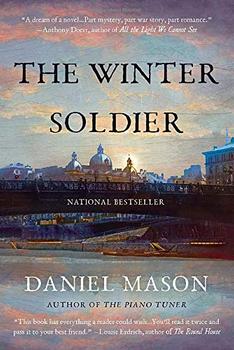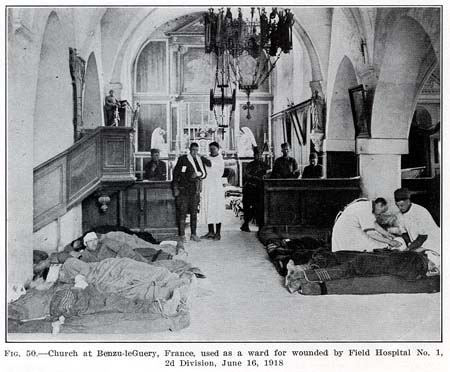Summary | Excerpt | Reading Guide | Discuss | Reviews | Beyond the Book | Read-Alikes | Genres & Themes | Author Bio

This article relates to The Winter Soldier
 The Winter Soldier shines light on the desperate measures taken to save lives during a war that produced casualties in the millions. When Lucius Krzelewski arrives in the small Eastern European village of Lemnowice, Sister Margarete informs him that she has lost many soldiers to typhus (typhoid fever) and that chronic infections of lice had driven many literally insane. Medical supplies are limited to sutures and a few antiseptics, which have to be periodically supplied to the remote field unit.
The Winter Soldier shines light on the desperate measures taken to save lives during a war that produced casualties in the millions. When Lucius Krzelewski arrives in the small Eastern European village of Lemnowice, Sister Margarete informs him that she has lost many soldiers to typhus (typhoid fever) and that chronic infections of lice had driven many literally insane. Medical supplies are limited to sutures and a few antiseptics, which have to be periodically supplied to the remote field unit.
Given that the use of advanced weapons of killing such as machine guns and artillery increased dramatically during WWI, the types of wounds that soldiers suffered were correspondingly catastrophic. Prior to WWI, the best hope for wounded soldiers in Europe would be to wait for somebody to pile them on to beds of straw on trains which would then transport them to distant hospitals. It was during the war that motor ambulances, outfitted with a physician or two, and basic supplies to staunch bleeding were pressed into service.
A new system of treating the wounded was also devised, one that would be fine-tuned over subsequent decades. The first stop would be a regimental aid post (RAP), which was incorporated into the front line. The RAP would typically be operating in triage mode, after which the wounded would be transferred to a casualty clearing station via a motor ambulance. The casualty clearing station was situated outside of the line of fire. After stabilizing life-threatening situations, the soldier could be cleared for transport by train to a larger hospital base. From descriptions in The Winter Soldier, it would appear that the church that housed the makeshift facility was a casualty clearing station, where the most pressing needs were attended to.
In The Winter Soldier, Sister Margarete performs amputations very routinely. Indeed amputations were extremely common at this time, mainly because the antiseptics available could not effectively prevent the onset and spread of gangrene in wounded soldiers. Midway through the war, Henry Dakin, a British biochemist in a military hospital on the front in France, devised a solution of sodium hypochlorite that could kill the gangrene-producing bacteria. Once this medicine was pressed into service, amputations were not seen as the first measure. Instead, wounds were irrigated with the antiseptic solution and the progression of the bacteria monitored with the hopes that amputation could be avoided.
The large scale of the two World Wars galvanized doctors to devise new ways of saving lives and generated many advances in medicine. In The Winter Soldier, Lucius treats Sergeant Jozsef Horvath, a man suffering from post-traumatic stress disorder. PTSD was not part of the medical lexicon at the time, and was generally referred to using terms like "shell shock," "battle fatigue," and "war neurosis." The classification of PTSD as a distinct psychological disorder did not come about until the American conflict in Vietnam.
World War I makeshift church hospital courtesy of U.S. Army Medical Department Office of Medical History
Filed under Medicine, Science and Tech
![]() This "beyond the book article" relates to The Winter Soldier. It originally ran in September 2018 and has been updated for the
September 2019 paperback edition.
Go to magazine.
This "beyond the book article" relates to The Winter Soldier. It originally ran in September 2018 and has been updated for the
September 2019 paperback edition.
Go to magazine.
Your guide toexceptional books
BookBrowse seeks out and recommends the best in contemporary fiction and nonfiction—books that not only engage and entertain but also deepen our understanding of ourselves and the world around us.